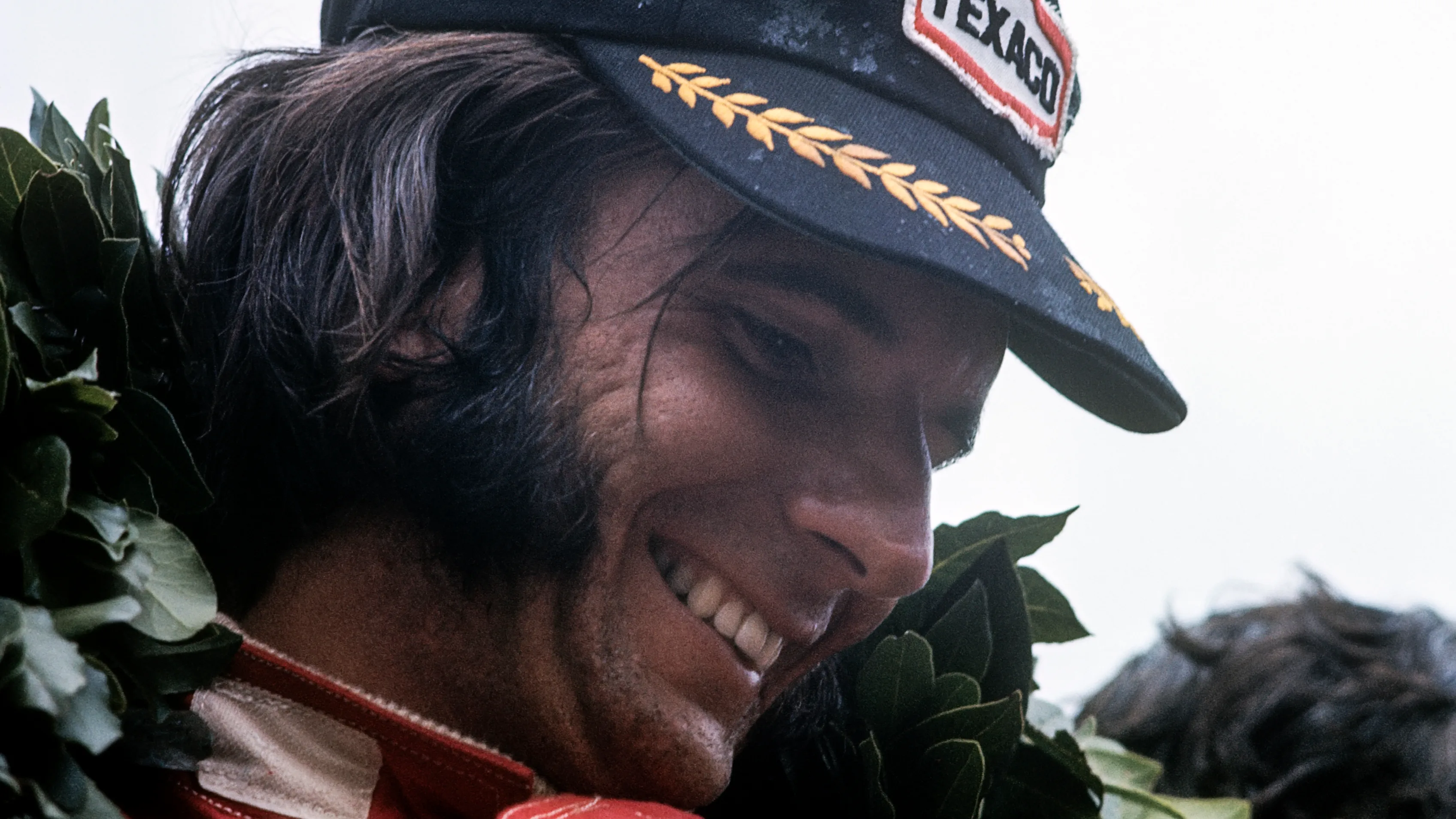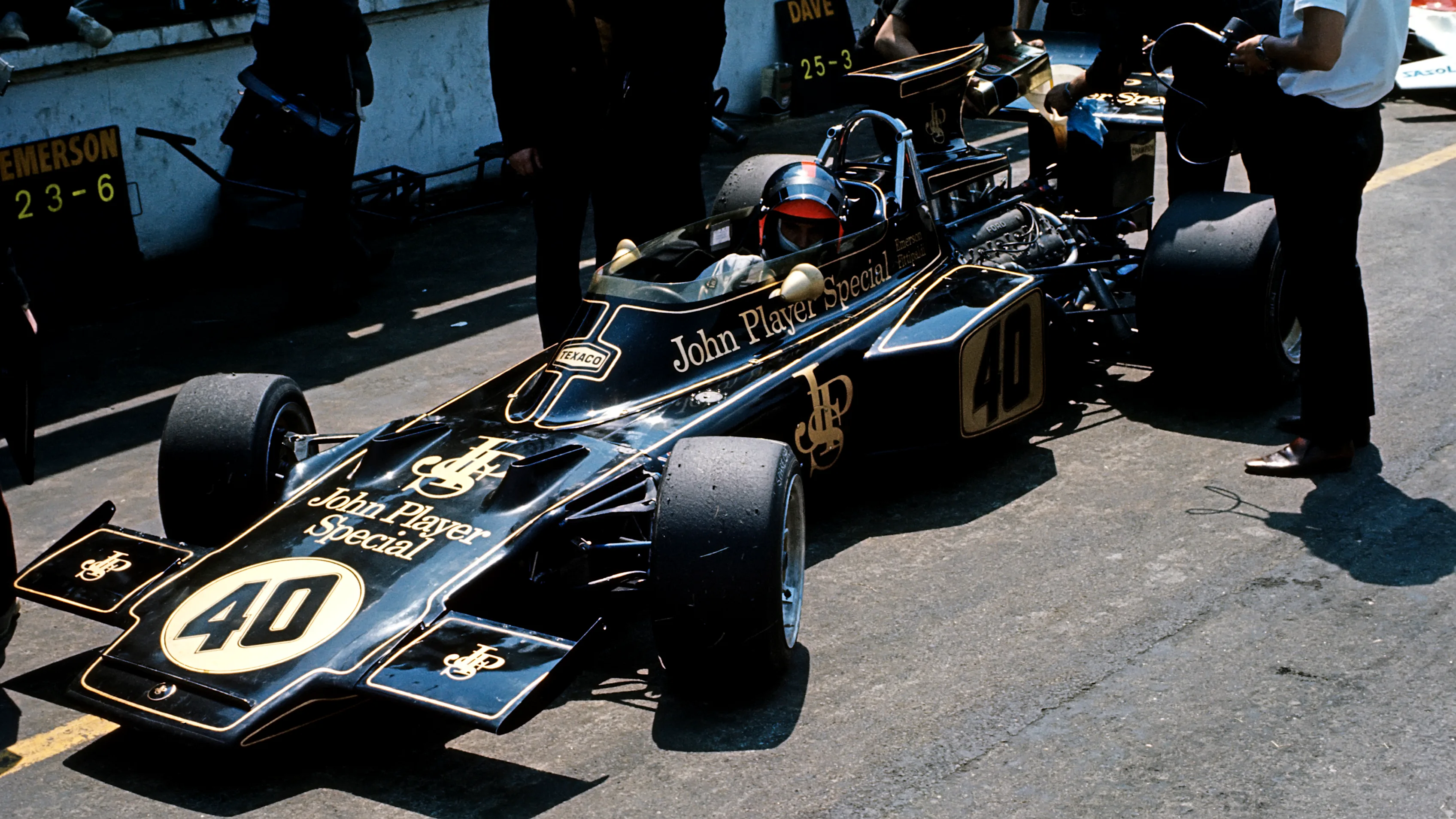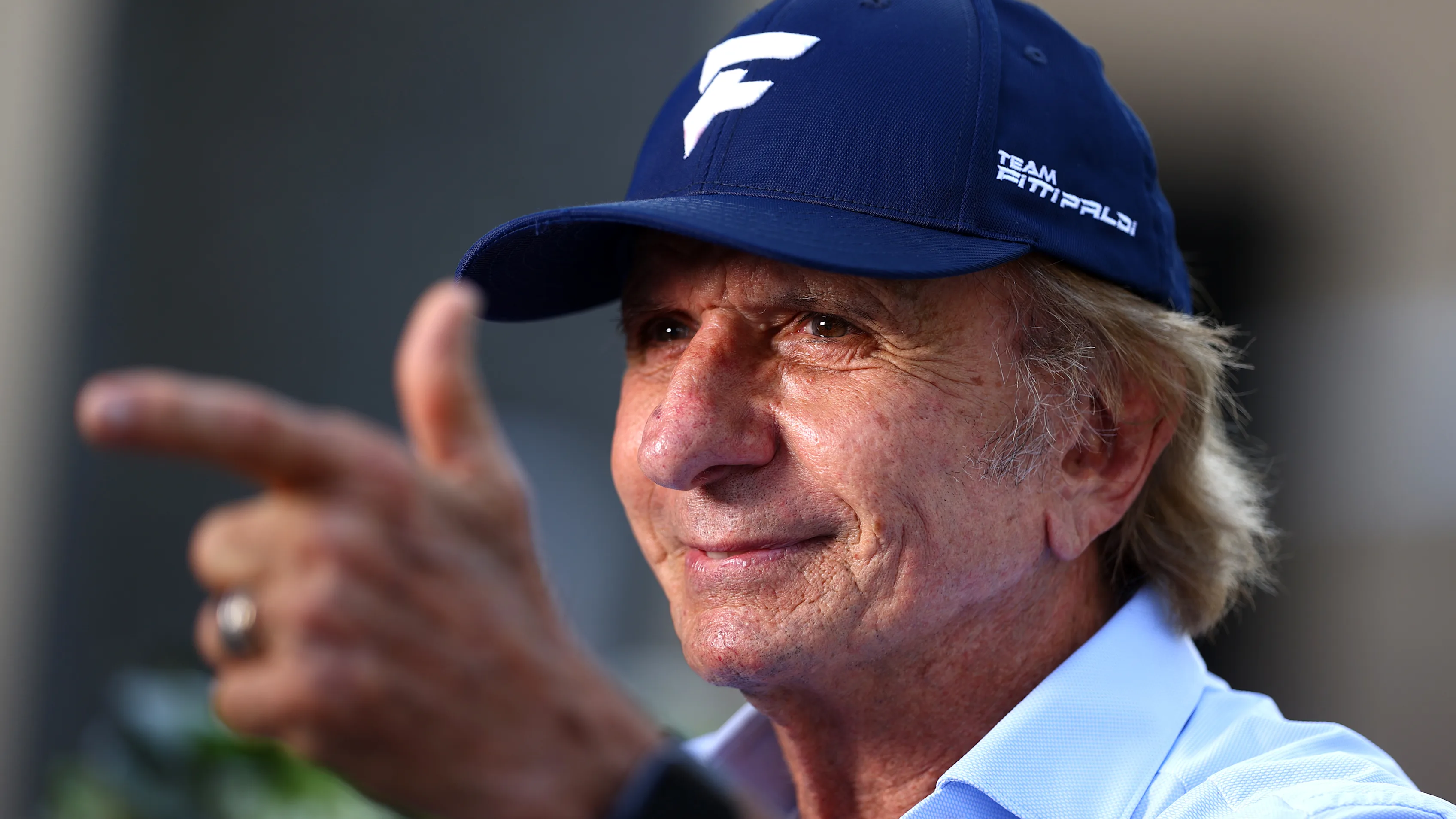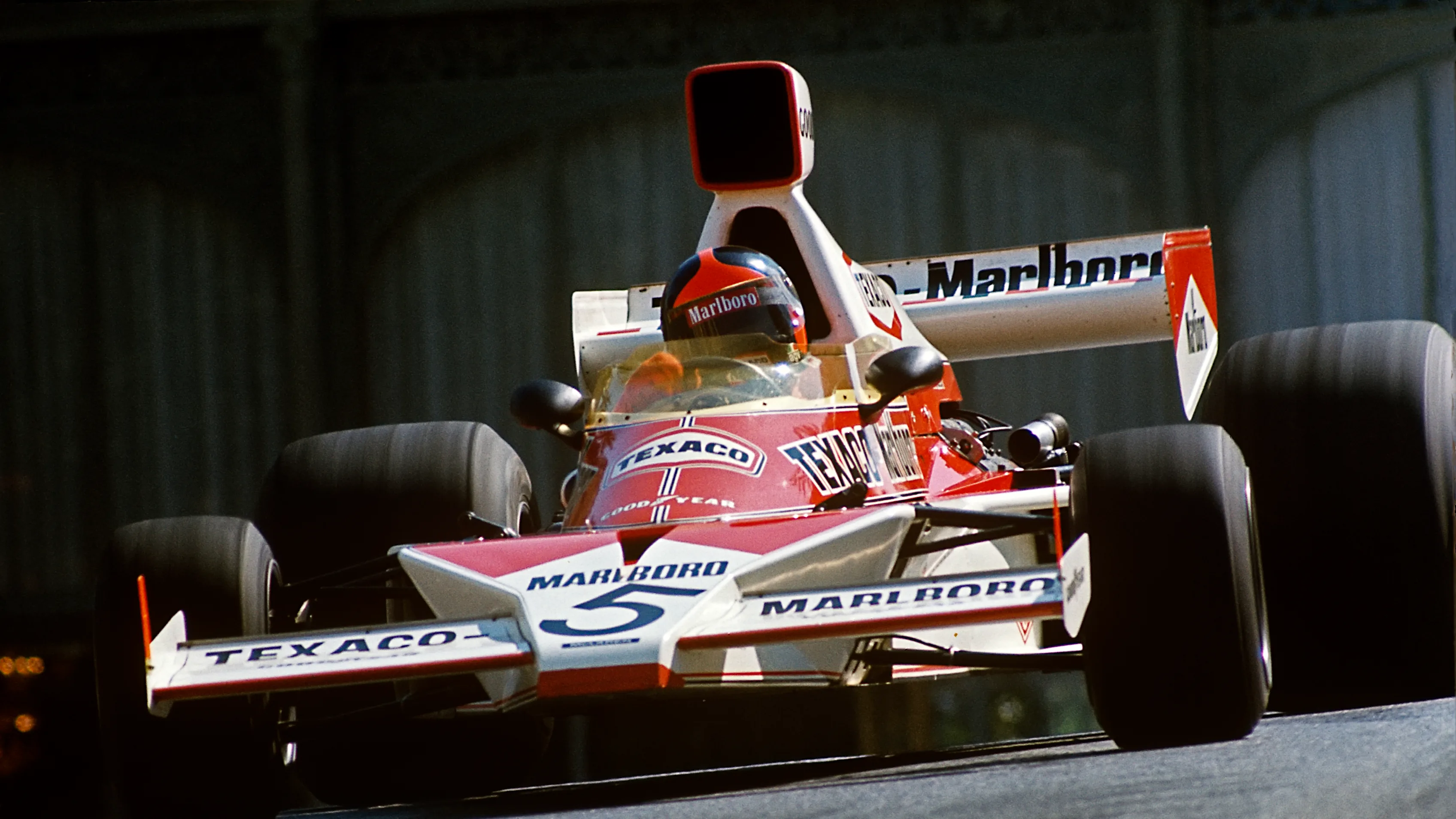HALL OF FAME - 1972, 1974
Emerson Fittipaldi

The youngest World Champion at the time achieved that distinction through circumstances that threw him in at the deep end while he was still relatively wet behind the ears. But 'Emmo' rose superbly to the challenge, winning his first driving title at 25 and his second two years later. Thereafter, dragged under by a disastrous career move, he sank to the bottom leaving hardly a trace of past glory. Yet his status as a popular champion and spokesman for the sport remains intact and he is also credited with serving as the inspiration for the influx of Brazilian drivers that followed him into Formula 1 racing.
Emerson Fittipaldi was named after Ralph Waldo Emerson, an American writer admired by his father Wilson Fittipaldi, a prominent Brazilian motorsport journalist and radio commentator. With this background Emerson (born December 12, 1946, in Sao Paulo) and his older brother Wilson Jr, soon became enthusiastic followers of motorsport, though when they decided to become participants their father was reluctant to finance it. He didn't have to because the Fittipaldi boys became successful entrepreneurs while still in their teens. Their enterprise, which began with a steering wheel that Emerson made for his mother's car, developed into a thriving custom car accessory business. Then came Fittipaldi karts, built and raced by the brothers, though more successfully by Emerson, who became Brazilian kart champion at the age of 18. In 1967, when the Fittipaldis turned to constructing Volkswagen-powered Formula Vee single seaters, Emerson drove one of them to the Brazilian championship.

The speed of his racing success at home prompted Emerson to abandon the pursuit of a mechanical engineering degree at university and put himself to the test of competing abroad. In 1969, alone and unable to speak anything other than his native Portuguese, he arrived in England, bought a Formula Ford and was an immediate winner. A step up to Formula 3 produced similarly impressive results and a reward in the form of a Lotus Formula Two contract for 1970. Quickly a top F2 contender, he was given a long-term contract by Lotus boss Colin Chapman, who eased him into his Formula 1 team near the end of the 1970 season. The promotion, in a third Lotus as understudy to regular drivers Jochen Rindt and John Miles, was intended by Chapman to provide further seasoning for a driver who had leapfrogged up the racing ladder with staggering speed. As it developed, tragic circumstances quickly conspired to force Emerson even higher and faster.
Having made his Formula 1 debut in the 1970 British Grand Prix, Emerson then finished a fine fourth in Germany and also ran well in Austria. Then came the ill-fated Italian Grand Prix at Monza, where Jochen Rindt was killed in a practice accident. Earlier that day Emerson had also crashed at high speed but was unhurt, though severely shaken. His remaining team mate John Miles was so upset at Monza that he left Formula One racing forever. Thus, after only three championship races on his CV, it fell to Emerson Fittipaldi to lead Team Lotus.

In the next race he achieved the best possible result, winning the United States Grand Prix at Watkins Glen to rejuvenate the devastated team and guarantee that the 1970 driving title would go posthumously to Rindt. Emerson's progress the next season was slowed by his involvement in a serious road accident while driving through France with his then wife Maria Helena. The crash left both Fittipaldis with lingering injuries and, though the accident wasn't his fault, it eroded Emerson's confidence somewhat.
In 1972 the Lotus 72 was the class of the field and Emerson brilliantly exploited its potential, winning five of the 12 races and scoring all the points that secured the Constructors' Championship for Team Lotus and made him World Champion at the age of 25 - the youngest in Formula 1 history.
As a driver his strengths included a delicate touch and calm approach that kept him out of trouble and an analytical mind that made him accomplished at tactics and strategy. As a personality in a milieu full of large egos he was refreshingly unassuming and had a nice line in self-deprecating humour. The media and the public warmed to 'Emmo' and his good nature usually prevailed when it was subjected to the several stern tests of character that awaited.
In 1973 the reigning champion was rather disconcerted to find that his new team mate Ronnie Peterson was faster. The swift Swede had nine pole positions to one for the Brazilian and also won four races to his three. However Emerson's more consistent results left him second in the championship (to Jackie Stewart) and Peterson was third. Their internecine rivalry went no further at Team Lotus because Emerson eagerly accepted a lucrative offer to join McLaren for 1974.
In his McLaren M23 Emerson won in Brazil, Belgium and Canada, made it to the podium on four other occasions and scored points in three more races to become the 1974 World Champion. When his 1975 season was only slightly less successful (he finished runner up to Ferrari's Niki Lauda), it came as a shock when the two-time champion chose to forsake McLaren and embark on a risky new venture. Emerson's decision, based on family loyalty and patriotism, made him a partner with his brother Wilson in a team funded by Brazilian sugar marketing company Copersucar.

Wilson Fittipaldi, whose Formula 1 experience amounted to a couple of ineffectual seasons in a Brabham, was not expected to contribute as much to the team's driving strength as his illustrious younger brother. But even Emerson went relatively nowhere in an embarrassingly uncompetitive Copersucar team that persisted from 1975 to 1979. Nor did a team name change to Fittipaldi Automotive in 1980 do much to salvage the former champion's reputation and his familiar toothy grin was seldom seen. In 1980 the Brazilian sugar money ran out and he stopped driving to manage the team and seek sponsorship. In 1982 the team folded and Emerson went home to Brazil to run the family citrus farms and auto accessory business.
However, there was more racing left in Emmo's life. He went IndyCar racing in the USA and became a star in that series, winning the 1989 championship and the famed Indianapolis 500 race on two occasions. But in 1996 he crashed heavily in the Michigan 500 and suffered a broken neck. While still recuperating, and still hoping to race again, he received serious back injuries when his private plane crashed near his farm in Brazil. He recovered, stopped racing and became a born-again Christian.
Text - Gerald Donaldson